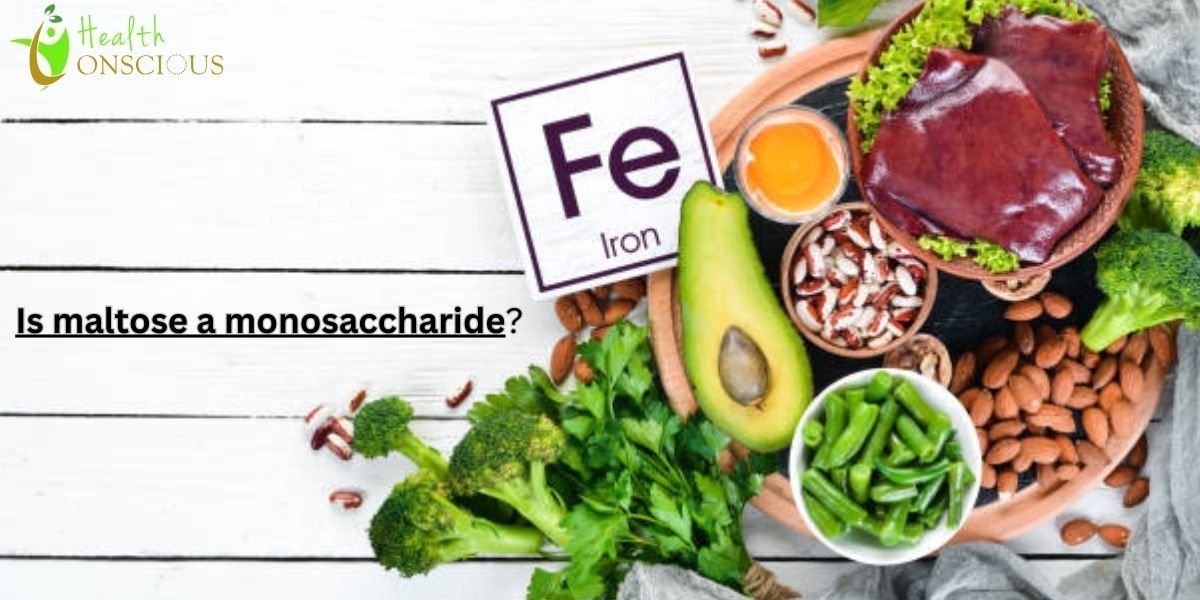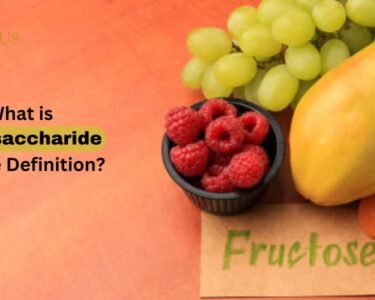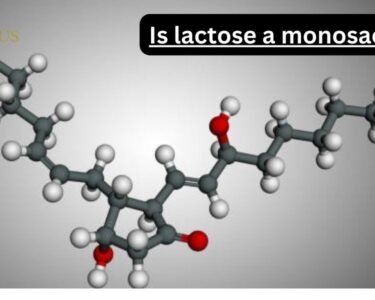Expert Verified
Answer:
No, maltose is not a monosaccharide. It is a disaccharide, maltose consists of two linked monosaccharides.
The Basics of Maltose
Glucose, the sugar our bodies utilize as fuel, may be known to you. However, did you know that another kind of sugar, maltose, also has important functions in our everyday lives? Maltose plays a larger role in your life than you would think, from the flavor of your favorite candies to making beer.
What is Maltose?
Is maltose a monosaccharide? The term “maltose” originates from “malt” and the molecular sugar suffix “-ose.” According to the Merriam-Webster dictionary, maltose is “a crystal dextrorotatory fermentable sugar formed especially from starch by amylase.” Simply put, it is a double sugar that originates from starch and consists of two glucose molecules. The enzyme maltase hydrolyzes or breaks down maltose chemically into two glucose molecules in the human body.
C12H22O11 is the chemical formula for maltose. Is maltose a monosaccharide? No, maltose is not a monosaccharide; it is a disaccharide. The formula reveals that it consists of 11 oxygen atoms, 22 hydrogen atoms, and 12 carbon atoms. Two glucose units make up the disaccharide known by the popular name maltose. A glycosidic bond connects two monosaccharides, or simple sugars, to create a disaccharide. Lactose and sucrose are two other examples of disaccharides.
Definition
Two glucose molecules come together to form maltose, a simple disaccharide. The enzyme amylase breaks down starch to create maltose.
Example
For instance, germinating grains like barley naturally produce lipase, which converts their stored starch into maltose, providing energy to the expanding plant. This is why brewing and malting operations frequently link maltose to their processes.
Figure 1. Maltose
Figure 2. Maltose sugar
Is maltose a carbohydrate?
Indeed, it belongs to the group of carbohydrates, essential macromolecules further classified into monosaccharides, disaccharides, oligosaccharides, and polysaccharides. People regard it as a sugar and a simple carbohydrate (carbohydrates can be simple or complex sugars).
Can maltose act as a reducing sugar?
It is, indeed. In chemistry, a reducing sugar is a sugar that can give electrons to another molecule and function as a reducing agent. Reducing sugars can interact with amino acids in foods and beverages to produce desired browning and scents (think baked products).
Is maltose capable of mutarotation?
Malt sugar is at risk for mutarotation since it is a lowering sugar.
The chemical composition of maltose
Knowing maltose’s chemical structure is key to understanding its characteristics and uses. The relationship between the two glucose units is just as crucial as the glucose units themselves.
Keep reading:
Is lactose a monosaccharide? Understanding Lactose
What are disaccharides? Structure, types, and examples
Is galactose a monosaccharide? A Quick Guide
Exploring the Maltose Structure
As previously mentioned, an alpha-1,4 glycosidic link joins two glucose molecules to form maltose, a disaccharide. But you could ask, What does this relationship look like?
Example
The two rings you see represent your glucose units. Each ring forms a bond with one oxygen atom. A vital stage in digestion and metabolism, the bond angle creates a structure that makes it simple for enzymes like amylase to reach and break the bond.
Understanding the Maltose Formula
Then, what is maltose’s chemical formula? The elements carbon (C), hydrogen (H), and oxygen (O) are present in its formula, just like in other carbohydrates.
| Chemical Formula | C12H22O11 |
Definition
According to this formula, there are 12 carbon atoms, 22 hydrogen atoms, and 11 oxygen atoms in a single maltose molecule.
The formula for a single glucose molecule, C6H12O6, indicates that maltose consists of two glucose units.
Deep Dive
Because of the orientation and location of the alpha-1,4 glycosidic link, maltose has different characteristics from glucose while being made up of two glucose units.
Maltose chemistry is a fascinating subject because it connects commercial processes such as brewing and biological ones such as development. You can enjoy the complex relationships between the basic materials that make up our everyday lives by being aware of their structure and function. So keep in mind the pleasant touch of maltose the next time you enjoy a pint of beer or a piece of sweets.
Maltose Formation and Breakdown
The natural process of maltose production and breakdown is essential for the conversion of energy in fungi and plants as well as for the digestion of meals high in starch by humans. Life depends on this process, which has implications for the fields of food science, fermentation, and brewing.
Maltose Synthesis
Hydrolysis is the enzymatic degradation of starch that results in maltose production. An enzyme called amylase aids in this procedure by breaking the bond between the glucose units in the starch molecule, resulting in the production of maltose.
Fungi and plants often produce maltose when they need to convert stored starch into a form suitable for transportation or utilization. Notably, this happens when grain seeds develop, converting stored starch into maltose to nourish the growing plant. The malt produced by this technique is used in the brewing and processing of alcoholic beverages.
Read More:
How does jelly react with monosaccharides
What is the macromolecule for monosaccharide
The Formation Process of Maltose
Let’s examine the creation of maltose in more detail.
It is mostly influenced by two factors:
Enzyme activity: The enzyme amylase primarily breaks down the lengthy starch chains into smaller maltose units. Heat and water significantly accelerate this process, explaining why maltose production is a crucial step in plant germination.
Time and temperature: Like many enzymatic processes, these two variables influence the production of maltose. Higher temperatures accelerate the process, but only up to the ideal temperature, which is typically around body temperature. The enzymes start to denature and stop working above this temperature. In a similar vein, more maltose will be produced up to a saturation point the longer the starch is subjected to the enzymes’ activity.
Fundamentally, the following chemical formula forms maltose:
Starch + Water→amylase n Maltose
This process shows how starch breaks down when water and the enzyme amylase are present, producing many maltose units.
Foods
What is the typical source of maltose? Generally speaking, raw food products don’t contain large levels of sugar. Foods that contain large levels of malt sugar in their raw or uncooked condition include ancient grains like kamut and spelled.
When canned or juiced, certain fruits have a much higher maltose content.
Some varieties of beer, ciders, and non-alcoholic malt drinks are examples of beverages that include maltose. Some chocolates, ready-to-eat cereals, caramel sauce, and maltose candy—often jelly candies—are examples of processed foods that are rich in malt sugar. Additional foods rich in malt sugar include corn syrup, barley malt syrup, brown rice syrup, and high-maltose corn syrup.
Some of the best sources are:
- Kamut
- Spelt
- Cooked sweet potatoes
- Cooked pizza
- Cooked cream of wheat
- Canned pears
- Guava nectar
- Canned peaches
- Canned cherries
- Canned applesauce
- Molasses
- Bagels and breads These items are commonly made from common grains such as wheat, maize, barley, and wheat.
- A few energy bars and cereals
- Malt beverages
What is the effect of maltose on taste? Indeed, maltose enhances the sweetness of the flavor. But as you can see from the list above, it frequently contributes sugar without being overtly sugary, such as in bread or bagels. Therefore, you can “hide” it in dishes that don’t taste particularly sweet.
Malt Sugar vs. Table Sugar
Maltose sugar isn’t nearly as sweet as sucrose, or table sugar if you compare the two. You can often substitute malt sugar for table sugar at a ratio slightly more than 1:1 to achieve the same sweetness. Is maltose a monosaccharide? No, it is not. The primary distinction between maltose and table sugar is that the former only includes glucose, while the latter contains both fructose and glucose. “There are subtle differences in the way they affect blood glucose levels,” stated Alan Barclay, Chief Scientific Officer of the Glycemic Index Foundation, spokesman for the Nutritionists Association of Australia, and licensed practicing dietitian. “Of all the sugars, glucose and maltose will raise blood glucose levels the fastest, which increases insulin secretion.” On the other hand, fructose will increase the level of triglycerides but have the least impact on insulin and glucose.
Studies on the health effects of maltose have generally been less extensive than those on sucrose. Non-whole foods like cereals and pizzas include processed sucrose (refined sugar) and maltose (particularly high-maltose corn syrup), which are harmful sources of sugar. When ingested in excess, these added sugars are known to have serious negative health consequences. A high-sugar diet is associated with high blood pressure, increased chronic inflammation, and an increased risk of heart disease death.
Maltose vs. fructose corn syrup
An alternative for high-fructose corn syrup (HFCS) is maltose.
Syrup made from high-maltose maize (HMCS) has become a popular alternative as high-fructose corn syrup began to have a negative image. Food and beverage producers began using HMCS because it increases a product’s shelf life and provides texture in addition to sweetness, just like HFCS. Is maltose a monosaccharide? No, it is not. Maltose is a disaccharide, unlike fructose, which is a monosaccharide. Both fructose and maltose are made using corn sugar, but the maltose variant of these two corn syrups is significantly less sweet than the fructose version.
Although high-fructose corn syrup and HMCS are both refined corn products, some sources claim that more than 90% of the maize grown in North America is genetically modified. Even though more research is required to determine the health impacts of HMCS, experts recommend limiting or avoiding the intake of highly refined, maize-based fructose and maltose corn syrups as part of a balanced diet.
Discover more:
What is ARFID and How Does It Affect Eating Behaviors
Micro-Biting: Understanding Eating Disorders and Table Habits
Perils and Adverse Reactions
It’s common knowledge that different types of sugar have different nutritional values. Consuming maltose as a result of eating a cooked sweet potato also allows you to absorb important vitamins and minerals and large levels of fiber. However, if you consume it as a manufactured product, such as a cracker, you’re likely only adding sugar and carbohydrates to your diet.
The body can use malt sugar, like all sugars, as an energy source, but you should use it sparingly as an added sugar to avoid negative health effects.
A sensitivity to malt sugar is a possibility. What is intolerance to maltose? The inability of the stomach to adequately digest maltose sugar molecules in meals because of inadequate maltase enzyme activity of the small intestine lining is known as maltose intolerance. An intolerance may also cause other gastrointestinal symptoms like diarrhea.
Too many foods with added sugars can cause dental damage, weight gain, poor nutrition, and elevated triglyceride levels.
Guidelines for Nutrition
You should avoid processed items that contain malt sugar. Like any other sugar, one should use maltose in moderation. Is maltose a monosaccharide? No, it is not; maltose is a disaccharide composed of two glucose molecules. There aren’t any particular guidelines for maltose consumption at the moment.
We refer to foods containing maltose, often known as malt sugar, as having “added sugar.” You should consume no more added sugars than half of your daily allotment of calories, according to the American Heart Association. This is around 6 teaspoons of sugar, or 100 calories per day for women, and 9 teaspoons of sugar, or 150 calories per day for men. Additionally, they recommend that infants under two years old avoid added sugar, and children over two should consume no more than 100 calories from added sugar each day.
Final Thoughts
Maltose is not a monosaccharide. It is a disaccharide, composed of two glucose molecules linked by a glycosidic bond. Monosaccharides are the simplest form of carbohydrates, consisting of a single sugar unit. Maltose, on the other hand, is a more complex sugar molecule that requires further digestion to be broken down into glucose molecules, which can then be used by the body for energy.
Read more:
Digestive health, its factors, and tips on how to maintain it
What is Visceral Hypersensitivity and How Is It Treated




